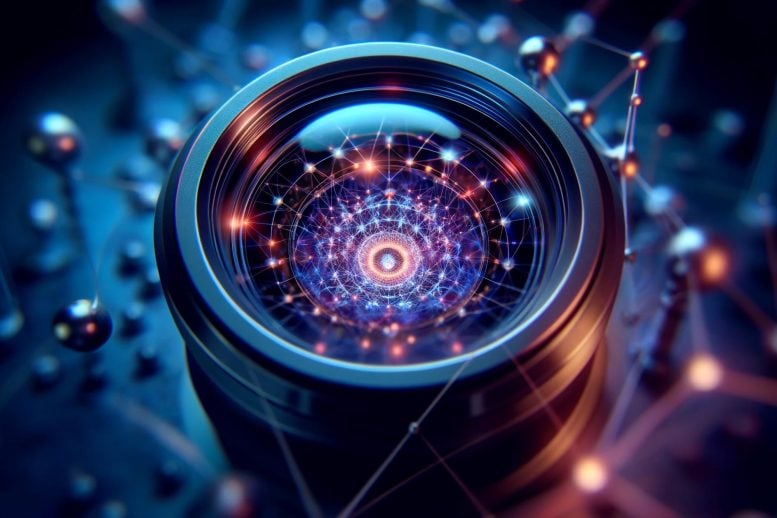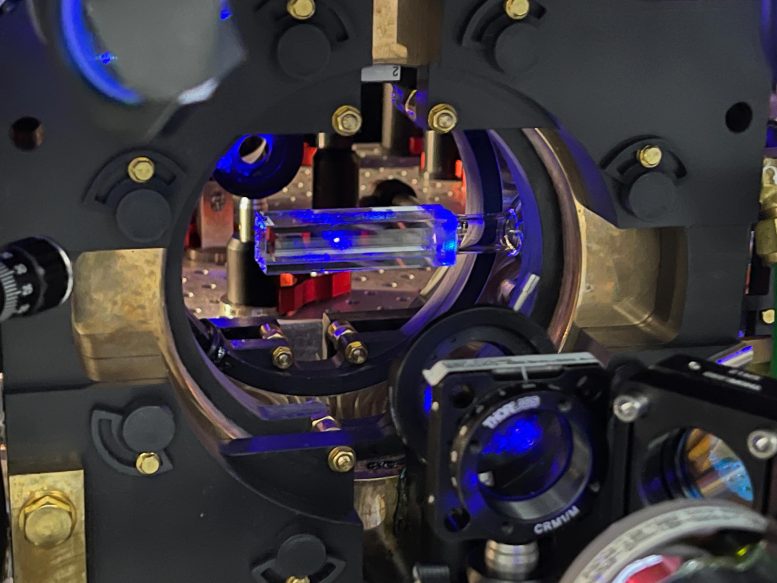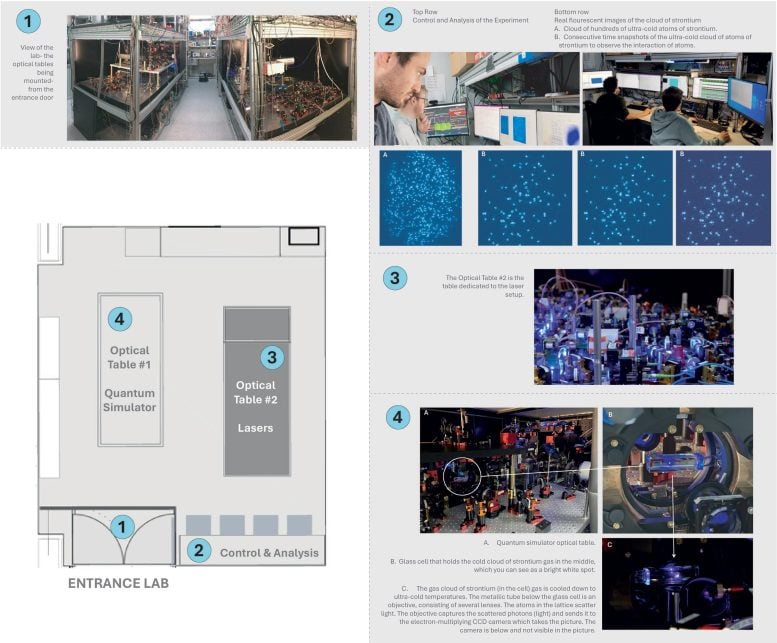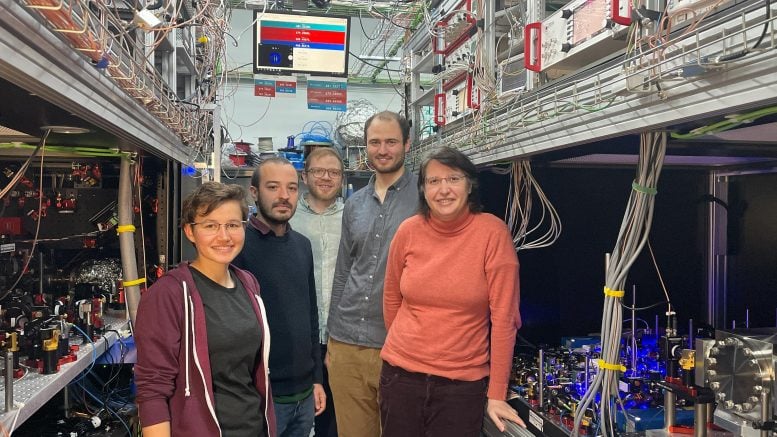
QUIONE microscope leverages strontium for high-resolution imaging and quantum simulations, confirming its potential in advanced quantum research. (Artist’s concept.) Credit: SciTechDaily.com
QUIONE, a unique quantum-gas microscope developed by ICFO researchers in Spain, utilizes strontium to simulate complex quantum systems and explore materials at the atomic level. It aims to solve problems beyond current computational capabilities and has already demonstrated phenomena like superfluidity.
Quantum physics needs high-precision sensing techniques to delve deeper into the microscopic properties of materials. From the analog quantum processors that have emerged recently, the so-called quantum-gas microscopes have proven to be powerful tools for understanding quantum systems at the atomic level. These devices produce images of quantum gases with very high resolution: they allow individual atoms to be detected.
Development of QUIONE
Now, ICFO researchers (Barcelona, Spain) Sandra Buob, Jonatan Höschele, Dr. Vasiliy Makhalov, and Dr. Antonio Rubio-Abadal, led by ICREA Professor at ICFO Leticia Tarruell, explain how they built their own quantum-gas microscope, named QUIONE after the Greek goddess of snow. The group’s quantum-gas microscope is the only one imaging individual atoms of strontium quantum gases in the world, as well as the first of its kind in Spain.
Beyond the impactful images in which individual atoms can be distinguished, the goal of QUIONE is quantum simulation. As ICREA Prof. Leticia Tarruell explains: “Quantum simulation can be used to boil down very complicated systems into simpler models to then understand open questions that current computers cannot answer, such as why some materials conduct electricity without any losses even at relatively high temperatures.”

Picture of the glass cell with the strontium gas cloud in the middle Credit: ICFO
The research of the group at ICFO in this area has received support at the national level (award from the Royal Spanish Society of Physics, and projects and grants from the BBVA Foundation, Ramón Areces Foundation, La Caixa Foundation, and Cellex Foundation) and European level (including an ERC project). In addition, QUIONE is co-financed by the Government of Catalonia, through the Secretariat of Digital Policies of the Department of Enterprise and Work, as part of the Catalan Government’s commitment to promote quantum technologies.
The singularity of this experiment lies in the fact that they have managed to bring the strontium gas to the quantum regime, place it in an optical lattice where the atoms could interact by collisions and then apply the single 
Map of the lab and location of the quantum simulator. Credit: ICFO
Why Strontium?
Until now, these microscope setups relied on alkaline atoms, like lithium and potassium, which have simpler properties in terms of their optical spectrum compared to alkaline-earth atoms such as strontium. This means that strontium offers more ingredients to play with in these experiments.
In fact, in recent years, the unique properties of strontium have made it a very popular element for applications in the fields of 
The team in the lab. From left to right: Sandra Buob, Antonio Rubio-Abadal, Vasiliy Makhalov, Jonatan Höschele, and Leticia Tarruell. Credit: ICFO